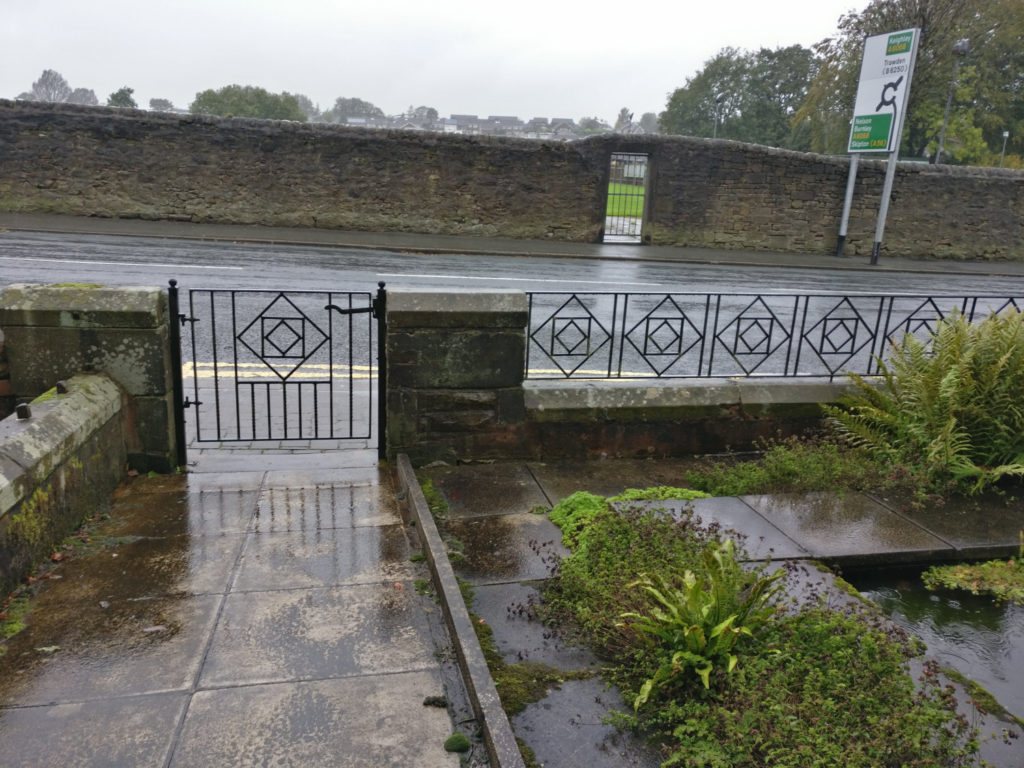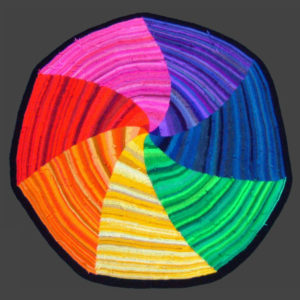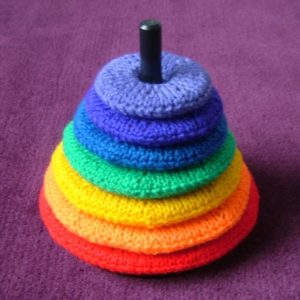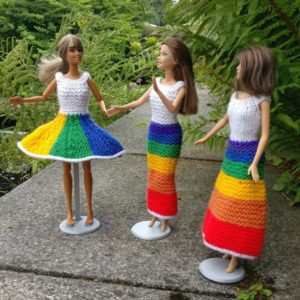You might be wondering what a couple of knitters are doing hosting the Carnival of Mathematics. If you are not familiar with the methods we use to teach maths you might want to check out our main Woolly Thoughts site. It has got rather rambling over the last 20+ years. The Afghans page is a good place to start.
First things first – the number 175.
Steve and I often talk about ‘nice numbers’. That usually means numbers that can be split up nicely when designing things – numbers with lots of factors (or divisors or whatever else you want to call them) or other interesting properties.
At first glance 175 looks like a nice number. It’s a number you come across quite often. It’s a multiple of 25. That has to make it a nice useful number.
Look at it more closely. Is it really much use? I don’t think so. It’s 5 x 5 x 7. Fives are OK but I don’t like Sevens. The only time we have used seven in designs is for rainbows.
I do quite like that 11 + 72 + 53 = 175. Wikipedia tells me that 135, 518, 598, and 1306 also have this property where raising the digits to powers of successive integers, and adding, equals itself.
Fives makes me think of pentominoes. I wondered whether there was some connection between the number 175 and the five squares that make up a pentomino. There isn’t but 5 x (5 + 7) does give me the total number of squares in a set of pentominoes.
Wikipedia also tells me
175 is an odd number, a composite number, and a deficient number. It is a decagonal number, a 19-gonal number, and a centered 29-gonal number.
175 is an Ulam number, and a Zuckerman number. It is the magic constant of the n×n normal magic square and n-Queens Problem for n = 7.
… and now for the Carnival
- Barney Maunder-
Taylo r posted a link, on Twitter, to The Car Wheel Games at House of Maths.
He said I’ve become distracted by car wheels! Here are five games for youngsters (and mathematically inclined adults) to play while out for a walk around town. - Lewis Baxter sent a link to Seventeen or
Bust : Progress of the search This is part of the Prime Grid project.
Lewis said This 17 year distributed computing project (which I believe is the longest) was resumed after a pause of about 2.5 years todouble check some results. Now the search continues for 5 remaining numbers, with more than 9 million digits, that is conjectured to verify that 78557 is the smallest Sierpinski number. - Autograph Maths made an announcement on October 12
We are now able to bring Autograph to everyone for free, forever. - Ari Rubin submitted An Introduction to State Space.
An introduction to converting equations of motion into theirstate space representation which is the foundation of many modern numerical methods. - Brent Yorgey sent a link to his new post Order of operations considered harmful.
He warns that this is a somewhat intentionally inflammatory piece on why the way we usually teach and define the “order of operations” is wrong. - Colin Beveridge has an interest in ancestry and posted a long thread about calculating the number of ancestors a person might have. He links it to the Birthday Problem. When I asked if it was available elsewhere online it wasn’t but it is now – An Ancestry Thread.
One of the replies to Colin leads to an older post, on a similar theme, by Tim Urban – Your Family: Past, Present, and Future - Katie sent a link to a Duplo game posted on Twitter by Sam Blatherwick.
- If paper folding is your thing you might like these geometric tessellations by Arseni Kazhamiakin.
- Do you prefer facts about heights and lengths and such things? UK Railway Station Trivia has recently been updated.
- Why mathematicians just can’t quit their blackboards. A Guardian article about a project called Do Not Erase, which is to be published as a book in 2020.
- Katie sent a link to a blog post that is a snapshot of what being a maths teacher involves – Classroom Reflections
- Another thing Katie spotted was a post on John D. Cook’s blog – Exact values of sine and cosine
- If you prefer listening to reading check out The Art of Innovation. This is A partnership between Radio 4 and the Science Museum exploring art and science
(Use the Episodes tab to find theprogrammes .) - The Aperiodical website has a review of Kit Yates’ new book The Maths of Life and Death
- To end the month Ed Southall started a Twitter thread about Vampire Numbers and evil numbers, and magic numbers and lots of other Halloween related numbers.
… and finally

The next Carnival of Mathematics (#176) will be hosted by Mehak at Tangent Math. Submit ideas here.




One comment